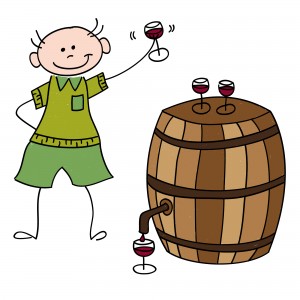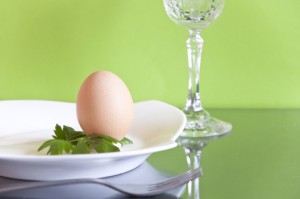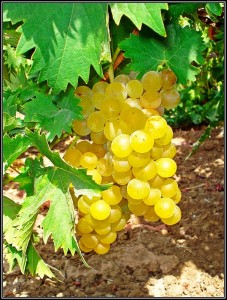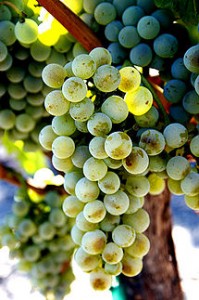by Lorri | Sep 12, 2012 | UnCorked
 It’s charity fundraiser season, the time of year when wine enthusiasts have opportunities to match their passion for wine with helping their community.
It’s charity fundraiser season, the time of year when wine enthusiasts have opportunities to match their passion for wine with helping their community.
Each year I find a few new pointers to add to our experience.
To spit or not to spit?
If you take any words of advice about events that explore hundreds of wines at one time, it would be to spit and spit often. Professional wine tasters discovered long ago that if you swallow every wine, by the time you reach sample No. 10 or so, you no longer have a professional opinion. Their discovery has made it very acceptable for anyone to spit.
Swallowing isn’t necessary to taste the wine fully. If you leave the wine in your mouth for eight to 10 seconds, you will taste the wine without the effects of the alcohol. Your goal for the large event is a tasting opportunity, not drinking everything in sight.
Spitting is part of the tasting process and not a social faux pas, so no need to be intimidated as you push your way through to the bucket.
Food and wine bliss
Many events will include the exploration of food and wine, either over a sit-down dinner or a casual walkaround. Take full advantage of this exploration of paradise.
Consider what it would take for you to re-create some of these tasting situations — hundreds of dollars worth of wines, several personal executive chefs and, more importantly, the cleanup. Savor the chance to make your own conclusions about wine and food pairings.
Not just another party
From my years of supporting and attending charity wine events, I know many times we forget sponsors behind the scenes supplying these tasting opportunities to our community. Each event isn’t just a few cases of wine, beer and food trays dropped off, but months of detailed planning by the distributors, retailers, restaurants, chefs and volunteers.
Take a moment to thank them for giving the community a tasting bonanza each year.
If you are looking to add tasting opportunities to your calendar, here are a few events:
- Wildwood Wine and Food Festival, Friday, Wildwood Reserve Dinner, Sept. 28, for tickets call (501) 821-7275.
- Arkansas Hospitality Association Culinary Classic, Tuesday, for more information call (501) 376-2323.
- Taste of the Town, Sept. 27, proceeds support North Little Rock Chamber of Commerce educational programs, for more information call (501) 372-5959.
- The Festival of Wines, Oct. 4, benefiting the American Heart Association, for tickets call (501) 379-1198.
- Links and Drinks, Sept. 27, benefiting Potluck, a food rescue group, for tickets call (501) 371-0303.
- Uncorked — The Mad Scientist Mash at the Museum of Discovery, Oct. 18, for tickets call (501) 396-7050.
by Lorri | Sep 5, 2012 | UnCorked
 I had a friend a few days ago ask if I thought she had what it takes to be a wine taster. The answer to her and every other person is yes, yes and yes. If you drink wine you already are a wine taster.
I had a friend a few days ago ask if I thought she had what it takes to be a wine taster. The answer to her and every other person is yes, yes and yes. If you drink wine you already are a wine taster.
The art of tasting wine is no different from tasting any other flavors familiar to your taste buds. If you were asked to taste coffee versus toothpaste, you could do it blindfolded as your familiarity would guide you, and you’d be able to identify different flavors (peppermint, cinnamon, burnt toast).
The same is true for wine except that the variances are more subtle. Practice makes one better but not always perfect. It’s a vast subject with thousands of variables at any given time. The most important aspect of tasting wine for the consumer boils down to, do you like it or not? However, a little education and experience can help you explain why you’ve reached a conclusion.
Wine-tasting groups, which promote discussion and save money, can be an enjoyable way to further one’s wine-tasting skills. Below, I’ve listed a few guidelines for setting up a group.
Set a clear start time for guests to adhere to, because this is one party that’s difficult to restart if someone arrives late.
Select a theme that focuses on a single grape variety, region or price.
The setup should be simple: all-purpose wineglasses, water glasses, a tasting sheet for notes and spittoons. Food is not a necessity but neutral crackers and bread refresh the palate between wines of varying styles.
Taste the wines from dry to sweet for whites and light bodied to full-bodied for reds. Good lighting is essential for visually experiencing the wine.
Try to create a neutral space for the tasting. Strong odors such as air-fresheners, smoke, scented candles, perfume and kitchen aromas can play havoc on taste buds and sense of smell.
Speak up and talk about the wine. For some reason, wine tasting makes people sheepish. If a person smells aromas of strawberries and you smell figs don’t simply nod, be sure to speak up to keep the discussion moving forward. The different perceptions are part of the fun.
Last but not least, the wines. Consult with your favorite retailer for recommendations on quality and price. If you’re having a potluck-style tasting, with each guest contributing a bottle, be sure everyone stays with the theme to get the most out of the tasting group.
by Lorri | Aug 29, 2012 | UnCorked
 I am not suggesting you replace orange juice with cabernet for your morning eggsand-bacon pairing but eggs can be a surprisingly good match with wine. Since my father-in-law began his new adventure – the ever growing and grand backyard chicken mansion – we’ve been blessed with an abundance of wonderful, fresh, organic eggs, thus the immediacy of this topic.
I am not suggesting you replace orange juice with cabernet for your morning eggsand-bacon pairing but eggs can be a surprisingly good match with wine. Since my father-in-law began his new adventure – the ever growing and grand backyard chicken mansion – we’ve been blessed with an abundance of wonderful, fresh, organic eggs, thus the immediacy of this topic.
Eggs are not as difficult to pair with wine as some experts would have us believe. They are a fundamental ingredient in many cuisines around the world. It’s the conventional wisdom of the past that they didn’t match – the runny yolks supposedly destroyed the texture and flavors of wine. Just like with all wine and food pairings, keep in mind the weight and other ingredients being added to the dish.
The scrambled egg can be much more than just fluffy. If you are having simple scrambled eggs with no added flavors, a sparkling wine or unoaked chardonnay is a safe bet. A favorite of mine is adding smoked salmon, which makes a Blanc de Blanc Champagne or sparkling wine ideal.
THE VALUE
- 2011 Wishing Tree Unoaked Chardonnay, Australia (about $13 retail)
THE SPLURGE
- 2010 Gruet Brut Reserve Blanc de Blanc, New Mexico (about $26 retail)
For a heartier dish, such aseggs Benedict complete with hollandaise sauce, a fuller bodied chardonnay is a good match.
THE VALUE
- 2011 Cupcake Chardonnay, California (about $12 retail)
THE SPLURGE
- 2011 B.R. Cohn Chardonnay Los Carneros, California (about $28 retail)
Omelets and quiches with ham or bacon have the flavor and weight to compete with a light-bodied red wine such as pinot noir or rose.
THE VALUE
- 2010 Concannon Pinot Noir, California (about $12 retail)
THE SPLURGE
- 2010 Villa Maria Private Bin Pinot Noir, New Zealand (about $22 retail)
by Lorri | Aug 22, 2012 | UnCorked
 It’s not often that trendwatching is part of wine drinking, but over the past year moscato has hit a stride with consumers. The trend is not only that sales continue to grow and grow, but also that the wine may quickly replace American’s love affair with white zinfandel.
It’s not often that trendwatching is part of wine drinking, but over the past year moscato has hit a stride with consumers. The trend is not only that sales continue to grow and grow, but also that the wine may quickly replace American’s love affair with white zinfandel.
I know it’s not a wine likely to receive universal approval by wine critics with scores and cellar notes, but its sweet, light, bubbly style just seems to work. Moscato is known for its surprising perfume-like fragrance. Even as a low-alcohol content, straightforward wine, the aromatics in most moscato are amazing – tropical fruits, peach, orange blossom and even honeysuckle.
Moscato should be enjoyed when it’s young and fresh. It needs to be served chilled and it pairs well with an array of foods, from brunch to dessert. Some of my favorite matches are apple desserts, summer salads, peach cobbler, fresh berries, lemon breads and quiche. With its versatility and balance of sweetness and acidity, it’s also an ideal starter wine for summer parties, weddings or even just sipping on the deck.
THE VALUES
- 2011 Ecco Domani Italia Moscato, Italy (about $15 retail)
- 2011 Bella Sera Moscato, Italy (about $10 retail)
- 2011 Barefoot Moscato, California (about $10 retail)
- 2011 Candoni Moscato d’Italia, Italy (about $14 retail)
THE SPLURGES
- 2011 St. Supery Moscato, California (about $22 retail)
- 2011 Marco Negri Moscato d’Asti, Italy (about $22 retail)
by Lorri | Aug 15, 2012 | UnCorked
 The most visited winery in the United States is not in Napa or Sonoma but nestled in the mountains of North Carolina. The Biltmore Winery has been producing wine since 1971 as part of the lavish Biltmore Estates built by George and Edith Vanderbilt. The estate boasts about 1 million annual visitors from around the world, with at least 600,000 of those gracing the immaculate winery and tasting room. That’s a lot of wine enthusiasts tasting and exploring. I had the opportunity to visit with winemaker Sharon Fenchak about the success and vision for these North Carolina wines.
The most visited winery in the United States is not in Napa or Sonoma but nestled in the mountains of North Carolina. The Biltmore Winery has been producing wine since 1971 as part of the lavish Biltmore Estates built by George and Edith Vanderbilt. The estate boasts about 1 million annual visitors from around the world, with at least 600,000 of those gracing the immaculate winery and tasting room. That’s a lot of wine enthusiasts tasting and exploring. I had the opportunity to visit with winemaker Sharon Fenchak about the success and vision for these North Carolina wines.
The Biltmore Century Collection features the estate’s top-selling wines. The Century White, created in 1999, began as a limitedproduction wine available exclusively in the tasting room. The wine was created to celebrate the Biltmore’s 100th anniversary and legacy of the estate. But its popularity made it a permanent part of the portfolio. The Century Red was added a few years later. Fenchak said, “These wines work as a collection [bought] together since one offers those a sweet white option and the other a dry red.”
The red and white this week are summer-friendly wines. The red is ideal for serving with a prime rib on the grill or barbecue, and the white on its own as a refreshing aperitif. My tasting was at its best with the red slightly chilled.
- NV Biltmore Century White Wine, California/ North Carolina (about $16 retail)
The nonvintage Biltmore Century White Wine will be a favorite for those of you asking for a semi-sweet wine to enjoy this summer. Fenchak couldn’t agree more with the reasoning behind this blend and its production.
“We wanted to make an aromatic wine that, when you just smell it, you would want to drink it.”
It’s a blend of aromatic white grapes, gewurztraminer, Muscat canelli, Riesling and symphony. All of these grapes bring a balance, Fenchak says, that “would create a sweet white wine with balance of acidity, sweetness and alcohol — producing a wine that was refreshing and not syrupy like some sweet wines can be.”
As production grew for the winery they began buying fruit from growing areas in California as well as an addition of their own indigenous grapes. “Certain grapes just can’t grow with the rain and humidity of North Carolina but we knew the taste and blend we wanted to create.”
The Century White is 98 percent from California’s Mendocino and Monterey regions and the remaining 2 percent from Biltmore’s North Carolina vineyards.
- NV Biltmore Century Red Wine, California (about $16 retail)
This wine is a fruity, Italian-style red blend of sangiovese and merlot.
“We knew from the feedback in our tasting room people wanted an approachable red wine,” she says.
Fenchak’s vision was to combine just the right grapes for a “fruity but balanced wine.”
She also wanted to create a food-friendly wine that matched the flavors but didn’t compete. For this wine the juice is fermented in contact with the skins, allowing for the uniqueness in the color and balance of flavors. They then press and transfer it to French and American barrels to age 10 months to 18 months.
by Lorri | Aug 8, 2012 | UnCorked
 Semillon (sem-ee-yon) is a chameleon-like wine. It can be bone-dry, rich with ripeness or lusciously sweet. When mass-produced, it can be simple or decadently sweet.
Semillon (sem-ee-yon) is a chameleon-like wine. It can be bone-dry, rich with ripeness or lusciously sweet. When mass-produced, it can be simple or decadently sweet.
Its unusual name raises the question: Is it a grape or a French wine region? It is, indeed a grape. And you may find it hidden behind a French Bordeaux label or lost within a blended wine.
But a few producers let it shine on its own. Growers in Australia’s Hunter Valley region in New South Wales have created an exceptional following by those seeking this grape solo. The wine is dry when young, but after about 10 years it begins tasting like rich, buttery marmalade. Wineries in neighboring Barossa Valley, in south Australia, offer a different style made from this grape, with a more steely lime character.
Semillon can be a great wine, but it is in France’s Sauternes and Barsac regions that it really shines. The grape in France has a very thin skin, making it perfectly susceptible to noble rot or botrytis, which growers welcome. Once it has survived in the vineyard for a long growing period, it is blended with sauvignon blanc. Semillon contributes weight and the ability to age in oak, while the sauvignon blanc adds acidity and flavor.
THE VALUES
- 2011 Peter Lehmann Semillon, Australia (about $12 retail)
- 2011 Penfold’s Rawson Semillon–Chardonnay, Australia (about $9 retail)
- 2011 Rosemount Estate Semillon–Chardonnay, Australia (about $9 retail)
THE SPLURGES
- 2010 Loan Barossa Semillon, Australia (about $24 retail)
- 2010 Leeuwin’s Sibling Sauvignon Blanc-Semillon, Australia (about $26 retail)
- 2010 Chateau d’Armajan Sauternes, France (about $46 retail)
 It’s charity fundraiser season, the time of year when wine enthusiasts have opportunities to match their passion for wine with helping their community.
It’s charity fundraiser season, the time of year when wine enthusiasts have opportunities to match their passion for wine with helping their community. I had a friend a few days ago ask if I thought she had what it takes to be a wine taster. The answer to her and every other person is yes, yes and yes. If you drink wine you already are a wine taster.
I had a friend a few days ago ask if I thought she had what it takes to be a wine taster. The answer to her and every other person is yes, yes and yes. If you drink wine you already are a wine taster. I am not suggesting you replace orange juice with cabernet for your morning eggsand-bacon pairing but eggs can be a surprisingly good match with wine. Since my father-in-law began his new adventure – the ever growing and grand backyard chicken mansion – we’ve been blessed with an abundance of wonderful, fresh, organic eggs, thus the immediacy of this topic.
I am not suggesting you replace orange juice with cabernet for your morning eggsand-bacon pairing but eggs can be a surprisingly good match with wine. Since my father-in-law began his new adventure – the ever growing and grand backyard chicken mansion – we’ve been blessed with an abundance of wonderful, fresh, organic eggs, thus the immediacy of this topic. It’s not often that trendwatching is part of wine drinking, but over the past year moscato has hit a stride with consumers. The trend is not only that sales continue to grow and grow, but also that the wine may quickly replace American’s love affair with white zinfandel.
It’s not often that trendwatching is part of wine drinking, but over the past year moscato has hit a stride with consumers. The trend is not only that sales continue to grow and grow, but also that the wine may quickly replace American’s love affair with white zinfandel. The most visited winery in the United States is not in Napa or Sonoma but nestled in the mountains of North Carolina. The Biltmore Winery has been producing wine since 1971 as part of the lavish Biltmore Estates built by George and Edith Vanderbilt. The estate boasts about 1 million annual visitors from around the world, with at least 600,000 of those gracing the immaculate winery and tasting room. That’s a lot of wine enthusiasts tasting and exploring. I had the opportunity to visit with winemaker Sharon Fenchak about the success and vision for these North Carolina wines.
The most visited winery in the United States is not in Napa or Sonoma but nestled in the mountains of North Carolina. The Biltmore Winery has been producing wine since 1971 as part of the lavish Biltmore Estates built by George and Edith Vanderbilt. The estate boasts about 1 million annual visitors from around the world, with at least 600,000 of those gracing the immaculate winery and tasting room. That’s a lot of wine enthusiasts tasting and exploring. I had the opportunity to visit with winemaker Sharon Fenchak about the success and vision for these North Carolina wines.